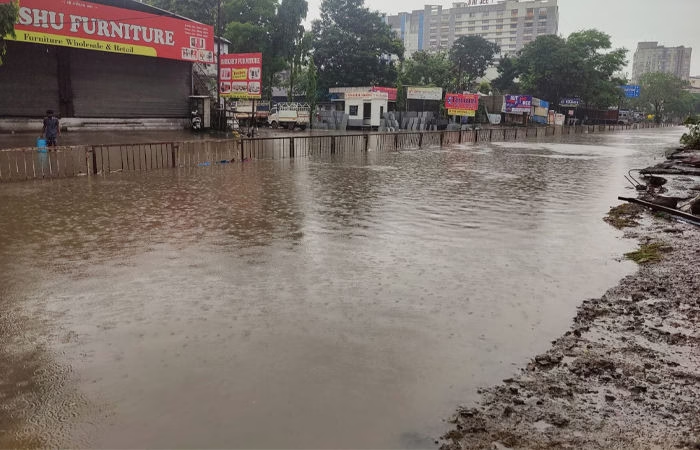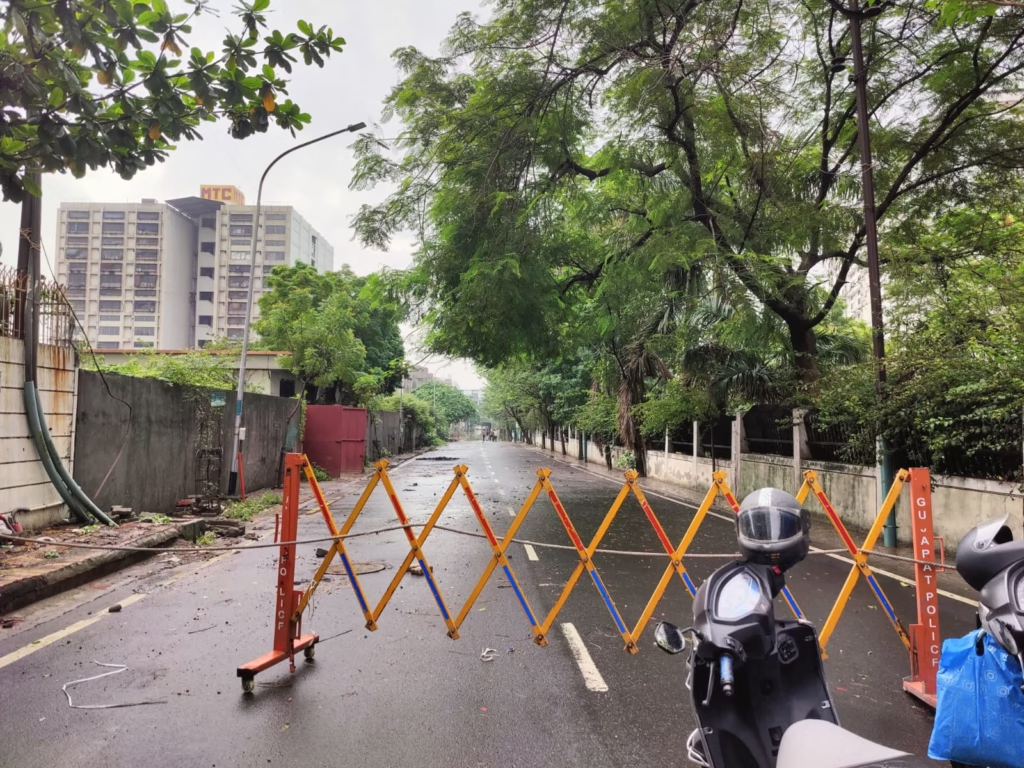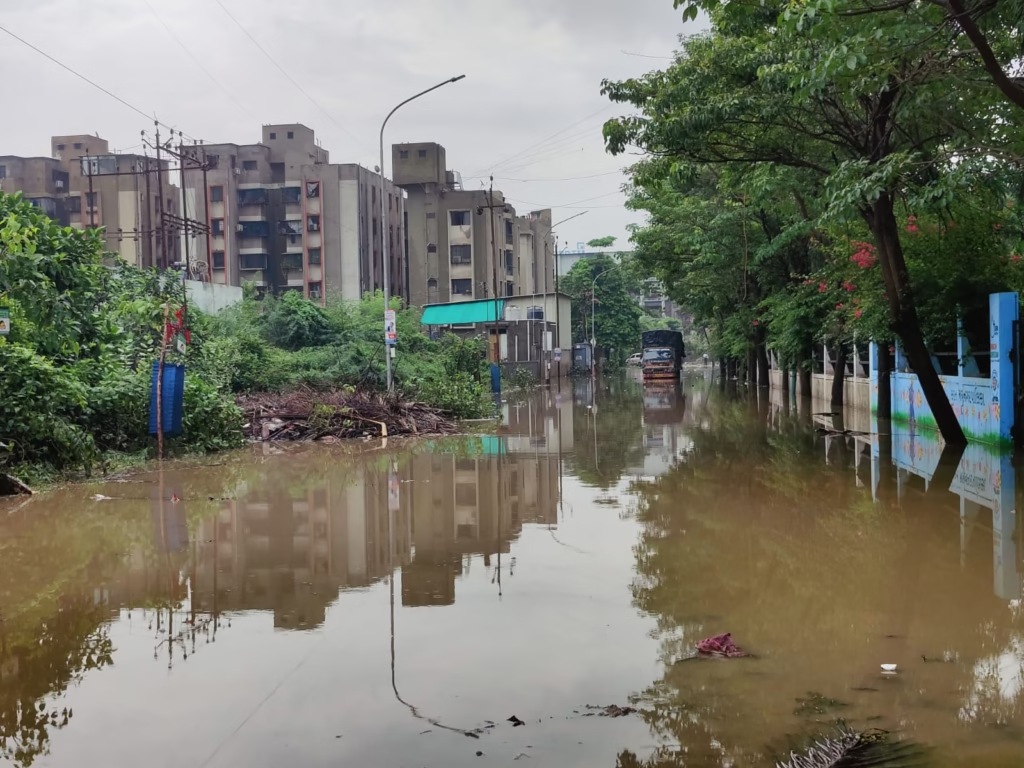Crisis in Gujarat: Surat Floods Trigger Protests and Panic

Surat Floods
Surat Floods , one of Gujarat’s fastest-growing urban centers and known for its textile and diamond industries, has been grappling with one of the worst urban floods in recent history. For the third day in a row, the city remains waterlogged due to continuous heavy rainfall and the overflow of the Khadi River. While natural forces may have triggered the disaster, citizens squarely blame the municipal corporation for its lack of preparedness and poor infrastructure management.
Khadi River Breaches Its Limits: What Went Wrong?
The Khadi river, typically a silent stream during dry seasons, transformed into a raging threat after relentless downpours for over 72 hours.
The Key Reasons Behind the Overflow:
- Inadequate desilting of the riverbed before monsoon
- Encroachments narrowing the riverbanks
- Incomplete drainage projects by Surat Municipal Corporation (SMC)
- Heavy upstream water discharge from nearby reservoirs
- Neglected warning systems for early alerts
As the river swelled, it flooded adjoining localities like Limbayat, Khatodara, Pandesara, and Umarwada, trapping thousands of citizens.
Third Day of Flooding: Ground Realities and Suffering Surat Floods
1. Residential Colonies Submerged
Entire societies in low-lying areas are submerged in waist-deep water. Vehicles are damaged, household items ruined, and power cuts have worsened the crisis.
Quote from local resident:
“We have no electricity, no food supply, and no help from the SMC. My children haven’t eaten properly in two days.”
– Kamlesh Patel, Limbayat resident
2. Schools and Hospitals Paralyzed
Several government and private schools declared emergency holidays. Hospitals like New Civil Hospital are functioning on emergency generators, with ambulances stuck due to waterlogging.
3. Commuter Chaos:
- BRTS services suspended
- Autos and rickshaws stuck on submerged roads
- Surat Railway Station flooded on Platform 1 and 2
Surat Municipal Corporation Under Fire – Surat Floods
As anger simmers, citizens are questioning the role of the Surat Municipal Corporation, blaming them for lack of pre-monsoon planning. On social media, hashtags like #SMCFailed, #SuratFlooded, #WhereIsTheCorporation are trending.
Public Grievances:
- “Drains weren’t cleaned despite multiple complaints.”
- “Flood sirens weren’t working.”
- “Emergency control rooms not answering calls.”
Even MLAs and ward councillors are reportedly missing from action.

Economic Impact: Lakhs Lost, Businesses Hit
Surat’s economy is heavily dependent on textile and diamond polishing units. With many of these operating in industrial zones like Pandesara, Sachin, and Katargam, the floods have resulted in crippling financial losses.
- Textile mills closed for 3 days
- Daily wage workers without jobs or transportation
- Diamond polishing units submerged, risking crores worth of machinery
Humanitarian Crisis Looming Surat Floods
The biggest concern now is not just waterlogging but lack of drinking water, food, and sanitation. Several areas are reporting the spread of waterborne diseases such as:
- Diarrhea
- Skin infections
- Fever and flu symptoms
Doctors are warning that if the situation continues, Surat may soon face a post-flood medical emergency.
State Government’s Response: Too Little, Too Late?
Gujarat CM Bhupendra Patel has ordered emergency teams and NDRF deployment. However, most citizens believe the response has been delayed.
Current Govt Actions:
- Deployment of 4 NDRF teams
- Provision of food packets in relief camps
- 12 emergency boats in use for rescue
- Temporary shelters opened in 9 wards
But on the ground, relief hasn’t reached everyone, especially in interior chawls and unauthorized colonies.
Citizen-Led Relief Efforts: Humanity in Crisis
In the absence of quick government action, many NGOs, youth groups, and local volunteers have stepped in:
- Surat Youth Force delivered 5,000 food packets
- Sikh Gurdwara Committees provided langar and water bottles
- Muslim Welfare Trust distributed clothes and dry snacks
- IT companies opened office floors as night shelters
Voices from the Ground: Anger and Appeals
“Every year it’s the same. Are we paying taxes for this?” – Rupal Mehta, teacher
“We called the emergency helpline 10 times. No one came.” – Rajiv Desai, shopkeeper
“We only want drainage. Just fix the drainage!” – Local protestor near Ring Road
In many parts of the city, small protests and dharnas have started forming, demanding accountability from elected leaders.

Social Media Storm: Hashtags and Videos Going Viral
From drone shots of submerged streets to viral videos of rescue operations, Surat’s flood has taken over platforms like Twitter, Instagram, and Facebook.
Trending Hashtags:
What Needs to Be Done Immediately?
Short-term Actions:
- Deploy more boats and NDRF teams
- Set up mobile medical vans
- Ensure 24/7 helpline operation
- Distribute chlorine tablets and safe water
Long-term Planning:
- Complete all pending drainage and desilting projects
- Restrict illegal encroachments on riverbanks
- Build rainwater harvesting and stormwater outlets
- Create a Surat Floods Disaster Cell with real-time alerts
Is Surat Prepared for Climate Disasters?
With climate change intensifying rainfall and extreme weather events, urban flooding is no longer rare. Surat needs a climate-resilient infrastructure, not just in policies but in real execution.
Experts from CEPT University and NIDM have warned that cities like Surat will be submerged annually if urban planning isn’t upgraded immediately.
Conclusion: A City Drowning in Negligence
This flood was not just a natural disaster — it was a governance disaster. Citizens are paying the price of administrative neglect, broken promises, and lack of accountability. If no lessons are learned from this, the next monsoon might not just destroy property — it may take lives.
Let Surat 2025 be the turning point. Not another forgotten flood.

Frequently Asked Questions (FAQs)
Q1. What caused the 2025 Surat Floods ?
A. Heavy rains, Khadi river overflow, poor drainage, and lack of planning by the Surat Municipal Corporation.
Q2. Which areas are most affected by the Surat Floods?
A. Limbayat, Pandesara, Khatodara, Umarwada, and parts of Ring Road and Varachha.
Q3. Is help being provided to flood victims?
A. NDRF and NGOs are helping, but not all affected citizens have received adequate support.
Q4. How is the government responding?
A. Relief camps, food packets, and rescue boats have been deployed, but citizens claim the response is delayed and insufficient.
Q5. What long-term solutions are proposed?
A. Better urban drainage, removal of encroachments, early warning systems, and climate-resilient city planning.




